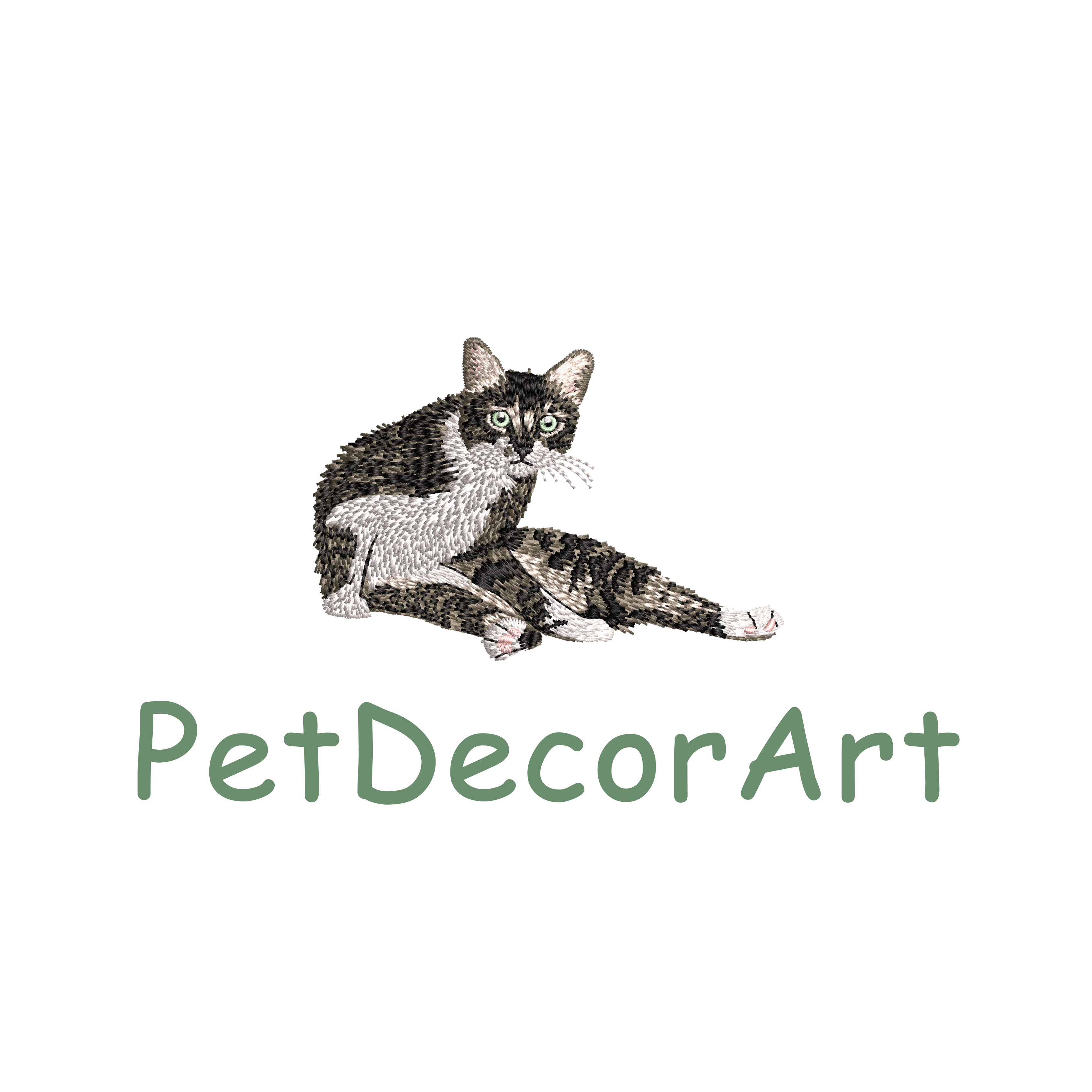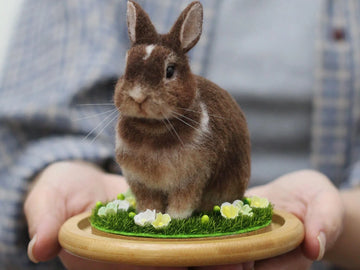A 3D pet portrait is more than décor—it’s a daily hello from a friend who changed your life. Displayed well, the likeness feels present; cared for well, it keeps its color and crisp detail for years. In this guide, we’ll translate museum-style preservation into simple home routines: choosing the right light, height, and frame/dome, plus no-drama cleaning and seasonal checkups. If you’re new to the category, start with our primer What Are 3D Pet Portraits? to understand formats (framed relief, freestanding sculpture, glass, and more).
Why display choices matter (beyond aesthetics)
A display spot does two jobs: it frames the likeness at an angle that flatters the sculpt and protects it from the three enemies of craft: UV, abrasion, and moisture. Get those right, and you’ll preserve edge definition (ears, whisker pads, feather layers) and true color—especially on natural wool and hand-painted surfaces.
- Choose indirect light. Raise the work to eye height for best realism.
- Use a dome or shadow frame if the shelf gets touched or dusted often.
- Log a 60-second seasonal check: dust, rotate 180°, confirm footing.
Best placement: height, rooms, and traffic zones
Eye-level matters
Portraits read most lifelike when the viewer’s eye meets the sculpt’s eye line. For seated viewing (sofas), aim for center at ~45–50 inches from floor; for standing corridors, ~57–60 inches works well. Tilt shadow frames slightly down if hung higher.
Good rooms
- Living rooms with filtered light
- Hallway galleries away from windows
- Bedrooms with east or north windows
Use caution
- Kitchens (grease aerosols + humidity)
- Bathrooms (steam, sudden temperature swings)
- South/west windows (harsh UV in afternoon)
- Low shelves within tail-swipe or toddler reach
Light strategy: natural, artificial, and UV protection
Think like a museum: plenty of light to appreciate detail, very little UV to prevent fading. Natural light is beautiful, but direct sun is not your friend—especially for natural fibers and pigments.
| Lighting choice | Do | Don’t | Notes |
|---|---|---|---|
| Natural window light | Place 1–2 ft back; use sheer curtains | Don’t place in direct sunbeams | Rotate 180° each season to even light exposure |
| LED accent lights | Use high-CRI (>90) warm LEDs | No halogen or UV-heavy bulbs | LEDs are cool and UV-low—ideal for shelves |
| UV control | Apply UV film on bright windows | Don’t rely on glass alone | Shadow glass ≠ UV-proof; ask for UV-rated glazing |
Frames, domes & mounts: choosing the right enclosure
Shadow frames (framed relief)
Ideal for wool felt busts and shallow reliefs. They protect from dust and fingers while locking in the viewing angle. Ask for spacers so the glass never touches the fibers.
Glass/acrylic domes
Best for full-body or freestanding heads. Choose a stable base with museum gel or micro pins. Acrylic is lighter, glass is clearer; both benefit from a microfiber dust routine.
Freestanding mounts
For resin/clay pieces, use hidden pins or a discreet plinth. Add quake putty if you live where floors shake or pets zoom.
Pro tip: If you plan a shelf gallery, standardize dome heights and frame widths so your eye reads “collection” rather than “clutter.”

Material-specific care (felt, resin/clay, glass, 3D-printed)
Wool felt (needle-felted)
- Dust weekly with a soft makeup brush or air blower—never a vacuum.
- De-pill edges gently by hand; avoid aggressive fabric shavers.
- Keep dry; moisture + friction can distort fibers.
Resin / polymer clay
- Wipe with barely damp microfiber; dry immediately.
- Avoid strong solvents and glass cleaners with ammonia.
- Mind heat sources (fireplaces, radiators) that can warp or soften.
Glass/acrylic panels
- Use a dedicated glass cloth; spray cleaner onto cloth, not enclosure.
- Acrylic scratches easily—choose plastic-safe polish if needed.
- Minimize static (anti-static cloth) which attracts dust to fibers.
3D-printed surfaces
- Dry microfiber only; avoid heat and long sun exposure.
- If hand-painted, treat like fine art—no alcohol wipes.
- Mind layer lines: use soft brushes that won’t snag.
Cleaning & maintenance schedule (printable)
| Frequency | Action | How | Why |
|---|---|---|---|
| Weekly | Dusting | Soft brush or blower; wipe dome/frame | Prevents embedded grime and fiber matting |
| Monthly | Rotation | Turn piece 180° | Balances light exposure and color aging |
| Quarterly | Hardware check | Tighten frame tabs, assess gel/putty, level base | Prevents tilts and accidental falls |
| Seasonal | Environment tune | Adjust curtains/UV film; confirm RH/temperature | Protects against summer UV and winter dryness |
| Yearly | Deep review | Photograph for baseline; compare edges/colors | Catches slow fade or leaning before damage |
Humidity, temperature & seasonal shifts
Stable air = stable art. Aim for relative humidity ~40–55% and temperature ~65–75°F. If you see fiber “relaxing” (soft slump) in humid summers, move the piece to a drier room or use a small dehumidifier. In very dry winters, increase room humidity slightly so wood frames don’t shrink against mounts.
Pet- & kid-safe display tips
- Use domes or shadow frames if curious paws or small hands can reach.
- Add clear museum gel under domes and quake putty under plinths.
- Place shelves outside typical cat launch paths (no obvious “staircase”).
- For high walls, use two-point hangers and a weight-rated French cleat.
Troubleshooting: pilling, leaning, dust, color shift
| Issue | Likely cause | Fix | Prevention |
|---|---|---|---|
| Soft pilling on felt edges | Friction, handling, cleaning too wet | Lift pills by hand or tiny snips; dry brush | Use dome; avoid tight shelves and frequent touching |
| Piece leaning in dome | Base vibration, pets, floor shifts | Re-seat with pins or museum gel | Level surface; add quake putty under base |
| Persistent dust inside frame | Loose backer or gasket | Vacuum frame (outside only), reseal backer | Choose frames with dust gaskets/spacers |
| Subtle color fade | UV exposure | Relocate, add UV film, rotate piece | Indirect light + UV-rated glazing from day one |
Printable display & care checklist
FAQ
Can I keep a felt portrait near a sunny window if it’s framed?
Yes, if the sun is diffused and the frame uses UV-rated glazing, but indirect light is always safer. Add sheer curtains or UV film if the room gets strong afternoon light.
How do I clean an acrylic dome without scratching it?
Use a microfiber cloth and plastic-safe cleaner. Avoid paper towels and ammonia-based sprays. Wipe gently in straight lines, not circles.
My cat head-butts the dome—how do I prevent knocks?
Add museum gel under the dome base and quake putty under the plinth. Consider a higher shelf or a wall shadow frame.
Is a de-pilling gadget safe for wool felt?
Generally no. Hand-remove visible pills or use tiny embroidery scissors for tips only. Finish with a soft brush.
Related reading
- What Are 3D Pet Portraits? — formats, materials, and how they’re made.





